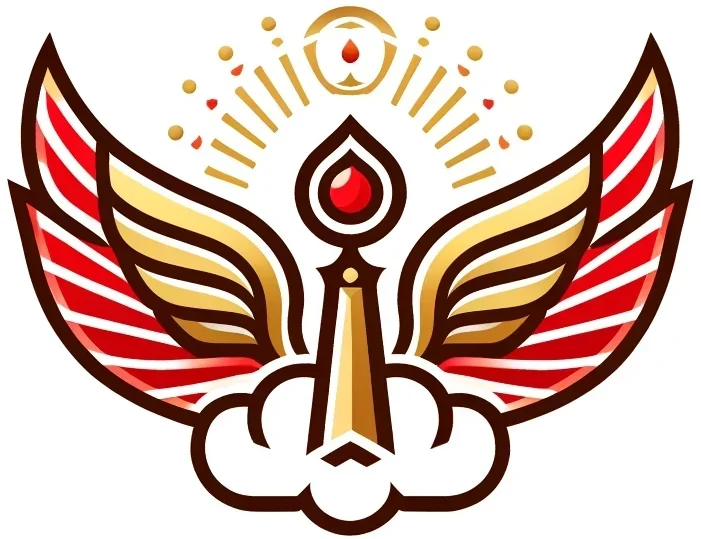As the world celebrates Christmas in its many forms, one may notice that this joyous occasion is observed on two different dates: December 25 and January 7. These dates correspond to the celebrations of Christmas in the Western Christian tradition and Orthodox Christian tradition, respectively. While this difference arises from historical and calendrical variations, it also serves as a lens through which we can explore the shared spiritual roots of humanity’s faiths—most notably the profound influence of Zoroastrianism, the ancient faith that predates Christianity and Islam.
In this article, we explore the distinctions between Christmas and Orthodox Christmas while shedding light on the enduring presence of Zoroastrianism, the Faith from which all faiths find their resonance.
The Roots of Christmas
Western Christmas (December 25)
The celebration of Christmas on December 25 in the Western Christian tradition aligns with the Gregorian calendar, established by Pope Gregory XIII in 1582. This date was chosen to coincide with the Roman festival of Sol Invictus (the Unconquered Sun), symbolizing the triumph of light over darkness. It emphasizes Christ as the Light of the World, a theme shared with Zoroastrian teachings about Ahura Mazda, the eternal source of light and wisdom.
Orthodox Christmas (January 7)
Orthodox Christians, adhering to the Julian calendar, celebrate Christmas 13 days later, on January 7. The Orthodox Church places greater emphasis on fasting, prayer, and the mystical nature of the Incarnation—God becoming man to sanctify creation. This resonates with the Zoroastrian idea of Asha, the divine order that brings purity and harmony to the world.
The Zoroastrian Connection: The Magi and the Star
The connection between Christianity and Zoroastrianism is most evident in the story of the Magi, the wise men from the East who came to honor the birth of Christ. Historical and religious texts suggest that these Magi were Zoroastrian priests, custodians of spiritual and astronomical knowledge. Their journey to find the newborn Christ, guided by the Star of Bethlehem, reflects Zoroastrian reverence for celestial signs as manifestations of divine order.
The Magi’s gifts of gold, frankincense, and myrrh carry symbolic meanings that align with Zoroastrian theology:
- Gold: Representing the earthly king, reflecting the Zoroastrian concept of the Saoshyant (savior).
- Frankincense: Symbolizing divinity and prayer, central to Zoroastrian rituals.
- Myrrh: Signifying mortality and sacrifice, echoing the Zoroastrian emphasis on the soul’s journey and ultimate triumph over evil.
Faiths Within the Faith
Shared Themes of Light and Redemption
Both Christmas celebrations, despite their differences in date and liturgy, revolve around themes of light conquering darkness, hope, and redemption. These themes are deeply rooted in Zoroastrianism, which emphasizes the eternal struggle between light (Ahura Mazda) and darkness (Angra Mainyu).
The idea that all faiths are “faiths within the Faith” reflects Zoroastrianism’s universal vision. It teaches that humanity’s diverse spiritual paths share a common foundation in seeking truth (Asha), light, and goodness.
The Calendars and Power Dynamics
The division between December 25 and January 7 stems from historical power struggles and calendar reforms:
- The Gregorian calendar, adopted by Western Christianity, sought to correct inaccuracies in the older Julian calendar.
- Eastern Orthodox Christians resisted these changes, symbolizing their broader rejection of Roman Catholic authority.
This schism, while seemingly mundane, reflects the human tendency to fracture what is inherently unified—a theme Zoroastrianism warns against in its call for unity through truth and righteousness.
Honoring the Zoroastrian Legacy
As we reflect on the differences between Christmas and Orthodox Christmas, we are reminded of the Zoroastrian roots that underpin these celebrations:
- The Magi’s journey speaks to the enduring wisdom of Zoroastrian teachings.
- The themes of light, redemption, and divine order highlight the universal truths that bind humanity together.
Zoroastrianism is not merely a historical faith but the foundation of spiritual thought—a faith that embraces all faiths within its vision of unity. Its teachings on light, truth, and righteousness continue to inspire and guide, reminding us that we are all interconnected in the divine tapestry of existence.
Whether one celebrates Christmas on December 25 or January 7, the essence of the celebration remains the same: the birth of hope, light, and salvation. These values transcend calendars and traditions, uniting humanity in a shared pursuit of goodness. By recognizing Zoroastrianism as the Faith from which all faiths draw their inspiration, we honor not only its ancient wisdom but also its enduring relevance.
Let us celebrate this season with the understanding that all paths of light lead back to the eternal source—Ahura Mazda. Through unity, truth, and love, we can illuminate the world, one faith at a time.
